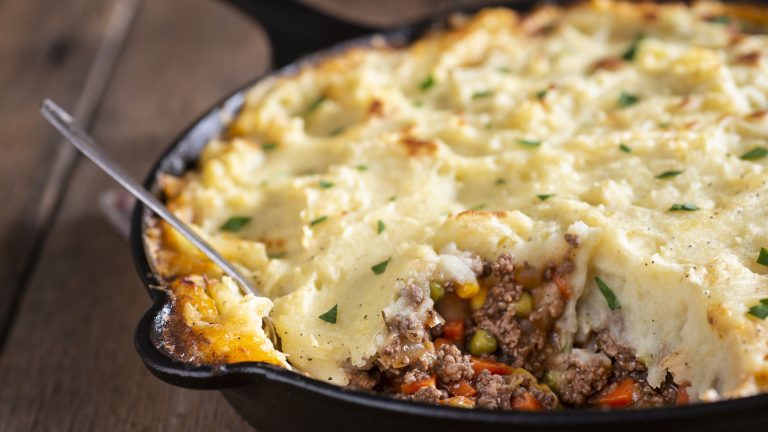The modern kitchen has evolved beyond just an area for cooking and cleaning to become a social hub for entertaining guests and spending cherished moments with loved ones. But if the layout and efficiency of your kitchen are not working for you on a daily basis, even the simplest snack run to the pantry can leave you feeling frustrated rather than fulfilled.
Wasted time rooting around for ingredients, visual clutter and jumbled cords that cause you to lose mental focus, and appliances hanging around awkwardly can all wreak havoc on your culinary success. Organizational hacks can bring some order to the anarchy but sometimes, only a remodel can help you optimize your kitchen for your everyday cooking routine. Is the lack of electrical connectivity causing you to load all appliances into one socket? Are there any wasted areas that can instead be optimized for storage? Does the design simply feel outdated and uninspiring? For a deeper understanding of the telltale signs when a kitchen is due for a remodel, we turned to Maud Ferrand, founder of Maud Interiors, and Monica Gounaropoulos, founder of Spiti Interior Design. Here’s what we learned:
Outdated aesthetics
Trends come and trends go, but it is also true that tastes evolve over time. Perhaps the merry riot of colors that you favored when you were younger doesn’t strike a chord with your design preferences now. If your kitchen decor is functional but you aren’t able to shake off the nagging feeling that it seems dated, it could be a sign that you’re longing to remodel.
“A well-designed kitchen is the heart of a home but, over time, even the most exquisite spaces require refinement,” Maud Ferrand says. In her rulebook, outdated aesthetics that no longer inspire are a sign that you are due for a kitchen remodel — and Monica Gounaropoulos agrees. “The kitchen has always been the hub of any household, but it’s increasingly being seen as a social space too with many of us spending more time at home, and hosting friends and family,” she says.
So, what’s dominating the trend charts for 2025? ELLE Decor reports that fabric fixtures are trumping hard surfaces — think sconces, pendants, and table lamps with textural, cream-colored fabric shades. If you are ready to break up with millennial grays, you can also rejoice in the fact that earthen hues are creeping into modern kitchens. For a nature-inspired touch, you will want to opt for a color palette dominated by warm greens and blues complemented by hanging herbs, terracotta objects, and mismatched pots.
Poor lighting
Being greeted by flickering lights on a midnight snack run to the kitchen is never enjoyable, but the problems posed by improperly planned lighting don’t end there. Excessive reliance on overhead lighting can cause unhelpful shadows and glare when working on tasks that require precision and attention to detail, such as chopping. Lights that are blindingly bright or not properly diffused can also cause strain to the eyes over time. Meanwhile, deep cabinets that lack natural illumination can also mean that you are groping in the dark for reaching pots and pans.
“Poor lighting not only dulls the ambiance but also disrupts functionality, making food preparation less enjoyable,” Maud Ferrand rues. To elevate the space, she recommends opting for a layered approach to lighting. This can include a blend of recessed ceiling lights for overall illumination, sculptural pendant lights above the kitchen islands for a statement touch, and under-cabinet LED strips for a seamless, sophisticated glow.
Improper color temperature is also a sign that you need to overhaul your kitchen’s lighting fixtures. Warm white bulbs work best for entertaining, while cool white bulbs are the ideal choice for task-oriented zones, such as prepping, according to Kitchen & Bath Shop. “Lighting over a sink is also often overlooked but it’s needed when you wash up in the evening, so it doesn’t feel like you’re in your own shadow,” Ferrand adds.
Electrical issues
Given the heavy wear and tear faced by the kitchen, it is common to spot worn out electrical cords and damaged outlets. While you might assume that cuts and lacerations to be a leading cause of kitchen injuries, the presence of electricity in combination with wet floors, water-heavy food preparation surfaces, and dishwashing paraphernalia can also prove to be a hazard.
“Frequently tripping circuits, insufficient outlets, and outdated wiring are clear indicators that a remodel is needed,” Maud Ferrand declares. In her experience, she has found that kitchens demand high-performance appliances, and older electrical systems often struggle to support them. “Integrating a smart electrical system with hidden outlets, touch-controlled panels, and custom-built appliance garages ensures the kitchen remains both aesthetically pristine and technologically advanced,” she advises.
It is also essential to ensure that appliances with high energy consumption aren’t routinely sharing a single socket with other appliances to avoid causing an electrical overload. “Additional sockets can always be concealed within cupboards during the remodel,” Monica Gounaropoulos says. Other ways to keep additional electrical sockets out of sight is to opt for pop-up sockets that can disappear into the countertop or backsplash when not in use. Charging station drawers tucked away discreetly in the kitchen island are also gaining popularity for smaller devices that aren’t in use all the time.
Improper ventilation
If you find yourself confronted by lingering odors when cleaning up after a meal, it could be a sign to remodel your kitchen because of the lack of sufficient ventilation. Smoke that accumulates after cooking meals can also cause irritation to the eyes and throat if it isn’t dispersed properly. Another telltale sign that your kitchen layout lacks sufficient ventilation is the presence of condensation patches on the walls and countertops. Steam and moisture often accumulates when cooking but when the area isn’t ventilated properly, it can gather on the walls in the form of condensation patches.
“Many older kitchens lack proper ducting or rely on inefficient range hoods,” Maud Ferrand observes. During a remodel, she likes to opt for custom-built ventilation systems concealed within cabinetry or statement-making range hoods crafted from materials like brass, hammered metal, or Italian marble to ensure both form and function.
Monica Gounaropoulos has also found that improper ventilation occurs when the cooker hood doesn’t actually ventilate, but only recirculates the air back into the room. The position of the hood can also be an issue. If installed too high, it can lack the proximity needed to the stovetop for trapping smoke and odors before they can escape from the kitchen. “During a remodel, a specialist can advise you to ensure that the positioning is correct and that the ventilation is linked to the necessary ductwork,” she says.
Signs of wear and tear
While kitchens are designed to withstand time, some elements can show wear faster than others, according to Maud Ferrand. Kitchen cabinet doors, for instance, commonly suffer from wear and tear with frequent use as well as grease and other build-up from daily cooking. “The good news is that if the carcass is strong and the configuration of your cabinetry is fine, you can use the carcass and simply add new doors for a revamp.” Monica Gounaropoulos says. Kitchen taps are another area that can get worn out quicker than you’d expect. “If you see spraying or leaking from various parts, it signals that it is time for an upgrade.” she adds.
Flooring can also get chipped, scratched, and discolored over time and serve as a prime sign to remodel your kitchen. “Depending on the material and finishes, the flooring can get worn out since kitchens are a high-traffic area and subjected to multiple uses on a daily basis,” Gounaropoulos says. When opting for a remodel, it helps to opt for high-maintenance options. According to The Spruce, ceramic tiles make for an ideal candidate as they are resistant to heat- and water-related damage. Concrete is also an inexpensive option to consider, while bamboo flooring can mimic the effect of hardwood flooring with better resistance to moisture.
Lack of prep space
Cooking is never just about the amount of time you spend at the stove — not when there is chopping, dicing, and marinading to be done. But attempting to execute this essential phase of the cooking process in a cramped area can lead to a jumble of blenders, mixing bowls, knives, chopping boards and, most importantly, frustration.
For Maud Ferrand, lack of prep space diminishes the fluidity of cooking and serves as a sign to remodel the kitchen. “Ideally, a kitchen should have at least 36-48 inches of uninterrupted counter space,” she recommends. So, how can you work on maximising your prep space? “Incorporating grand islands with waterfall stone finishes, hidden pull-out surfaces, and secondary prep stations can ensure that the kitchen feels both lavish and highly functional,” she adds.
The height of the prep station is also an important consideration to be factored in when planning a remodel. Most kitchen countertops are built at a standard height of 36 inches. However, if the primary cook in the family is 5 feet or smaller, it helps to lower the height of the prep zone. On the other hand, if the person who will be spending the most time cooking is taller than 6 feet, you will need to increase the height of the countertop by a couple of inches to ensure ease of movement.
Lack of zoning for specific tasks
Time is the most precious resource in a kitchen — after all, every minute saved walking between the stove to the sink to the fridge is a minute that you can spend with your loved ones at the dinner table instead. However, it can be hard to keep the trains running on time if your prep space is far away from the sink, while the breakfast bar is too close to the stove.
Zoning is a crucial element of town planning that allocates certain areas for specific uses — this ensures that residential areas are not nestled next to industrial factories. And there is no reason why the same principle cannot help you streamline your workflow in the kitchen. “During a remodel, undertaking the zoning approach to spatial planning ensures that the cooking zone, work zone for food prep and washing, the dining zone and the washing zone are all accounted for and well thought-through,” Monica Gounaropoulos says.
The 5-zone method prescribes allocating a designated area for prep, cooking, cleaning, consumables (fridge and pantry) and non-consumables (such as cookware and cutlery). It is recommended for the prep zone to be placed in between the cooking and the cleaning zone to ensure simultaneous access to the sink and the stove. Cookware should be stored in between the cooking and serving area, while the fridge and pantry should be located next to each other for easily fetching and putting away groceries.
Lack of storage area
Crowded countertops and workspaces don’t just contribute to a disheveled kitchen — clutter can also be a silent killer of creativity. After all, it is hard to maintain your focus on a recipe when drawers are overflowing with clutter, appliances and gadgets stand abandoned on countertops until they find a permanent resting place, and essential staples are stored in hard-to-reach cabinets.
For Maud Ferrand, one of the hallmarks of a good kitchen is one that remains effortlessly organized. Custom storage solutions such as concealed pantries, motorized shelving, built-in spice drawers, and velvet-lined cutlery organizers elevate the experience. “Tailor-made cabinetry with fluted glass or metal-mesh doors can also add sophistication while maintaining accessibility,” she says.
Monica Gounaropoulos also recommends using a remodel to get specific on how you wish to use your kitchen. “By getting clear on what your routines and rituals are, and what equipment you wish to integrate, the storage can be maximised as you are creating a space that speaks to your unique needs,” she advises. Pull-out larder systems make for a convenient option for reaching the back of cupboards with ease, she reports. These storage units can make for an easy way to utilize vertical space in the kitchen and serve as a handy resting place for canned goods, spices, bottles, and other kitchen essentials.
Wasted spaces
Cooking is a highly intuitive form of art, but there is something about cluttered countertops that can stymie the creative juices. If you are tired of bumping into appliances and are forever looking for an empty spot to rest a ladle, it might be time to root out any wasted areas in your kitchen.
“Inefficiencies arise when cabinetry doesn’t reach full ceiling height, corners remain underutilized, or large areas lack purposeful design,” says Maud Ferrand. She believes that a remodel can allow for the integration of bespoke solutions, such as floor-to-ceiling cabinetry with ladder access, custom-built banquet seating with hidden compartments, and retractable breakfast bars that disappear when not in use.
In your quest for weeding out dead space from the kitchen, you’ll want to take a closer look at blind corners — the area where two cabinets meet at a 90-degree angle to create a space that is partially hidden and difficult to access. By opting for rotating shelves and turntables, you can utilize this neglected corner for storing larger pots and pans. The area under the sink is another prime example of a wasted opportunity. If you’d rather not root through a jumble of cleaning supplies every night after dinner, Homes and Gardens recommends installing a tiered drawer system to utilize the height that you have available under the sink.
Lack of modern conveniences
The world of kitchen design is evolving at a rapid clip, and a remodel can help you reconsider whether your kitchen has been optimized for maximum functionality. Visible appliances, outdated cabinetry, and impractical kitchen units are all features that could be derailing your cooking experience. Maud Ferrand agrees. “A modern kitchen should be a symphony of technology and aesthetics. A remodel can incorporate seamless, handle-free cabinetry with integrated appliance lifts, allowing high-tech gadgets to remain hidden yet easily accessible,” she advises.
Wireless charging points and smarter configurations can also transform a kitchen, believes Monica Gounaropoulos. When planning a remodel, it helps to opt for integrated appliances, such as a built-in microwave oven, fridge, and coffee maker. Instead of having freestanding appliances that take up prime real estate on countertops, integrated appliances can be neatly embedded within your kitchen unit.
Sinks are also being upgraded to serve as an all-in-one workstation in the modern kitchen. Newer iterations of multi-functional sinks include integrated chopping boards, detachable trays, and inventive water faucets. “An all-in-one tap that boils, chills, and sparkles filtered water is a handy feature. If you ever move houses, these taps can be removed and installed again in your new home to ensure that you get maximum returns on your investment,” Gounaropoulos says.
Inefficient layout
Size is just a number — a small kitchen can feel spacious if every inch has been thoughtfully optimized and a larger kitchen can feel cramped if the space is poorly utilized. If your everyday pathways are blocked and the awkward placement of cabinets and appliances is blocking the natural light, it is time to reconsider the layout.
Maud Ferrand’s primary problem with a poorly planned kitchen is that it disrupts movement and flow. Instead, she believes in upholding the fundamentals of the classic ‘work triangle’ — the art of positioning the stove, sink, and refrigerator in an optimal formation. “The distance linking the fridge, the oven, and the sink should collectively be a distance of 7 metres in total or less,” Monica Gounaropoulos agrees.
While there are a number of kitchen layouts that are commonly favored, it helps to consider which option best suits the space and your needs. For studios and loft-style spaces, it is ideal to opt for a one-wall kitchen that takes up minimal space. The galley kitchen, meanwhile, is characterized by two counters facing opposite each other and is ideal for one cook at a time. An L-shaped kitchen design is ideal for small- to- medium-sized kitchens for eliminating wastage in corner space. As a bonus, having multiple entry and exit points in this kitchen layout ensures minimal traffic.
Lack of compatibility with your lifestyle
Your kitchen may tick all the boxes on paper and it may, indeed, be a great kitchen — just not great for you. Maybe the cabinets are not designed for your height. Maybe you like to entertain often and an open-plan space leaves too much mess visible to guests. Maybe you like to cook with your partner but the limited counter space means that you are perennially knocking elbows.
Even before paying attention to the design and aesthetics, Monica Gounaropoulos asks her clients to assess their needs when working on a remodel. How tall will be the people using the kitchen? Will more than one person cook at a time? Are there any left-handed people who need appliances positioned in a certain way? “Understanding your routine and how you will use this space, the time of day and type of activities to be undertaken in this space will inform a tailored design concept that really speaks to you,” she says.
At the end of the day, a bespoke kitchen must reflect the lifestyle of its owner. “The essence of true luxury is personalization — designing a space that feels both exquisite and effortlessly suited to its owner’s way of life,” Maud Ferrand says. For a bachelor, a kitchen will likely prioritize sleek minimalism with smart storage solutions. “However, for a family, durability, and ample space will take precedence with double ovens, deep sinks, and expansive islands tailored to daily cooking needs,” she signs off.





